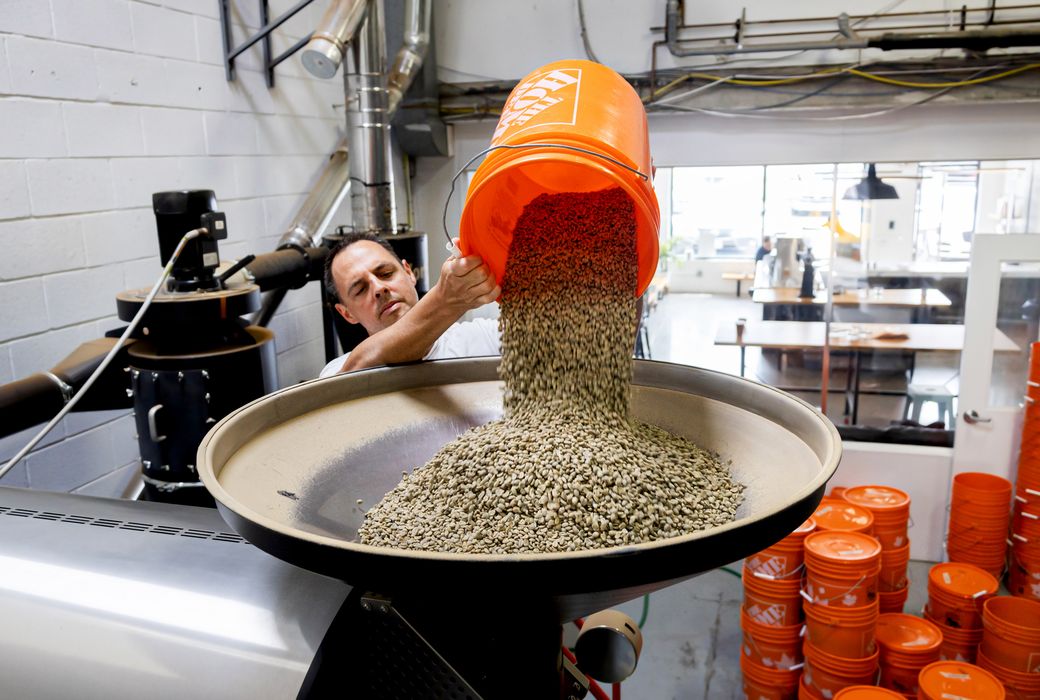Mountain View Coffee Factory Outlet
Mountain View Coffee, a local Toronto wholesaler, has opened its first mixed-use showroom and café on Logan Avenue just north of Lake Shore Blvd East. The concept, essentially, is to attract clients through experience. That is, restaurant or café owners can come in, taste the coffee, try out the cups, sample the syrup, and, if all feels right, hopefully settle on a deal.
Mountain View already supplies over 1,000 restaurants and cafés--everything from big chains like the Pickle Barrel to small independent shops--and it's counting on snagging a few more through this venture.
But Mountain View's new café was also created with we non-entrepreneurial types in mind. Indeed, the shop features all sorts of coffee drinks, wholesale roasted beans, an ever-changing selection of blends, and free WiFi. That is, as long as you don't mind the roaring tumble of loading dock trucks in the background.
"It will be one of those things where you'll get something different one day to the next," says Eric Shabsove, who runs Mountain View along with his two brothers. "We might be using one blend for our espresso one day, another the next. Our wholesale options will change, too."
For now, Mountain View has set up a little industrial crate of eight bins of different roasted beans, ready to scoop and take home at $9.99/lb. The roasting of the coffee, much of which is fair trade and organic, will still be done at the original roastery in North York .
"We got tired of commuting," says Eric, who lives in the Leslieville area. "So we're bringing a good portion of the business down here." That business will largely be of tasting and distribution, and Eric gives me a little tour of the soon-to-be loading area, the storage space, the quality control and cupping room, and the office.
Along with coffee, Mountain View imports its own fair trade cane sugar, a variety of teas, and supplies a whole collection of biodegradable cups and packaging. And like any good, kitschy cafe, it's currently sporting a mishmash of new and old furniture, mismatched mugs, and pastries that will likely come from various suppliers.
I must (sheepishly) admit I didn't expect too much from the bar, but the barista prepared me a truly fantastic white chocolate mocha latte ($3.50). Perhaps I assumed the larger sales focus would somehow overshadow the attention paid to smaller details (read: each individual cup), but my latte was the perfect combination of smooth and slightly sweet, with a generous layer of foam on top. Great flavour and finish as well. In retrospect, I totally see why my assumption was misguided; if I was looking to buy, I would certainly be sold.
Photos by Jesse Milns





